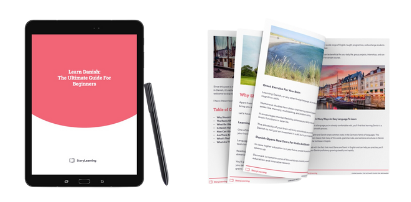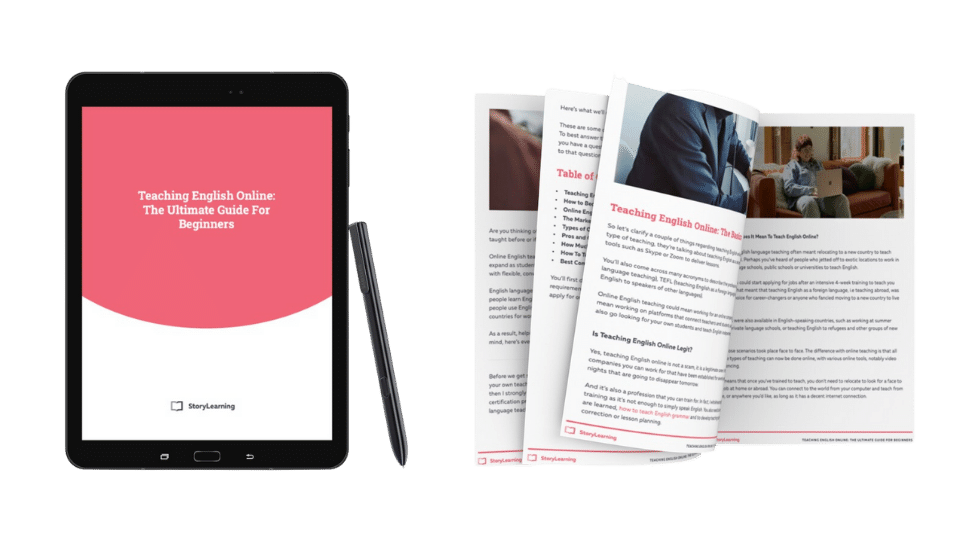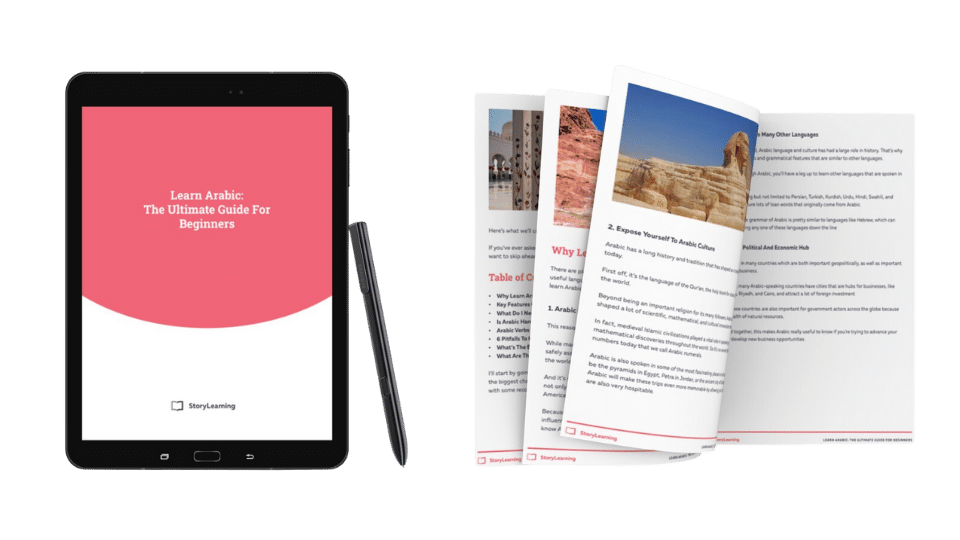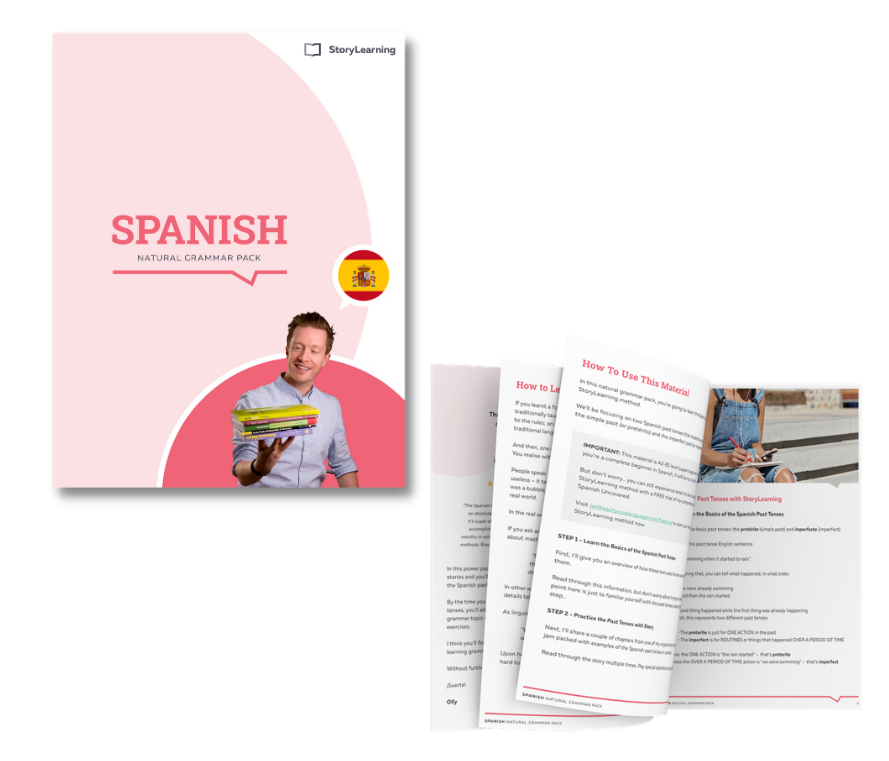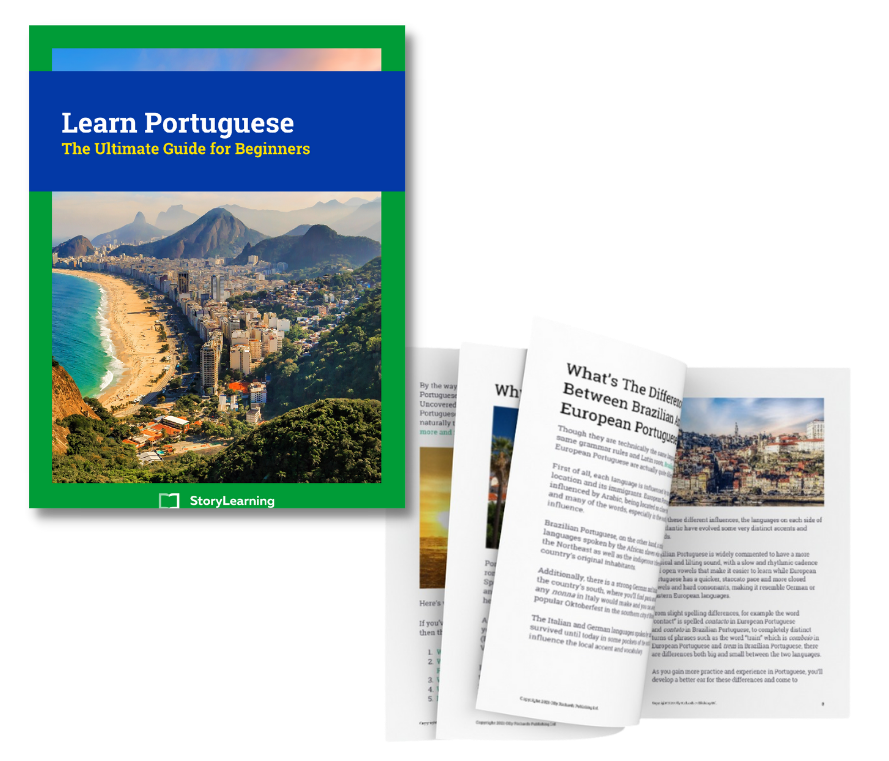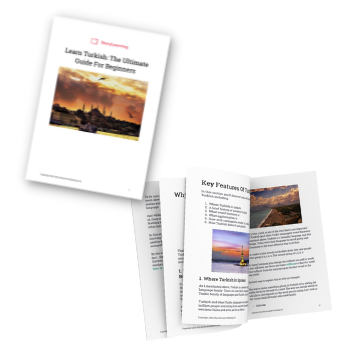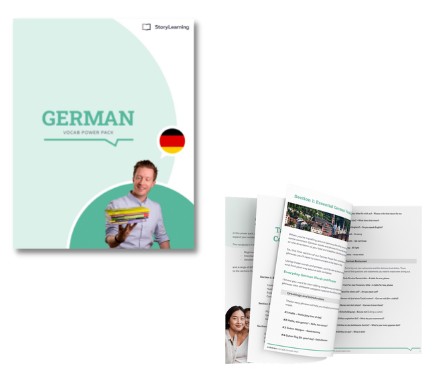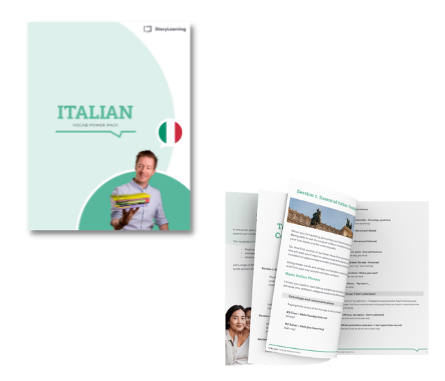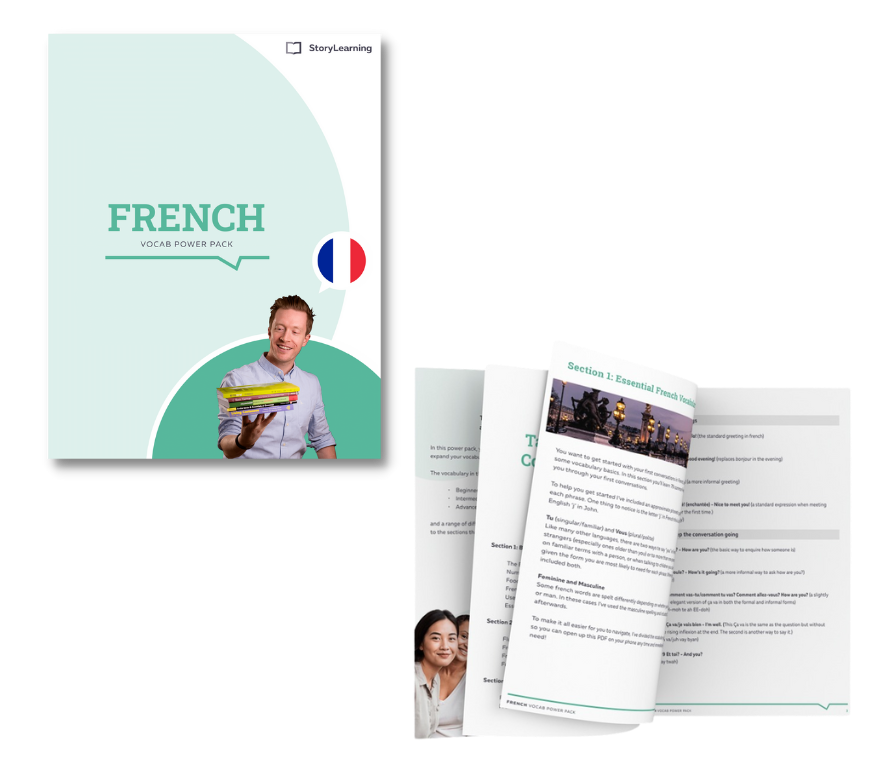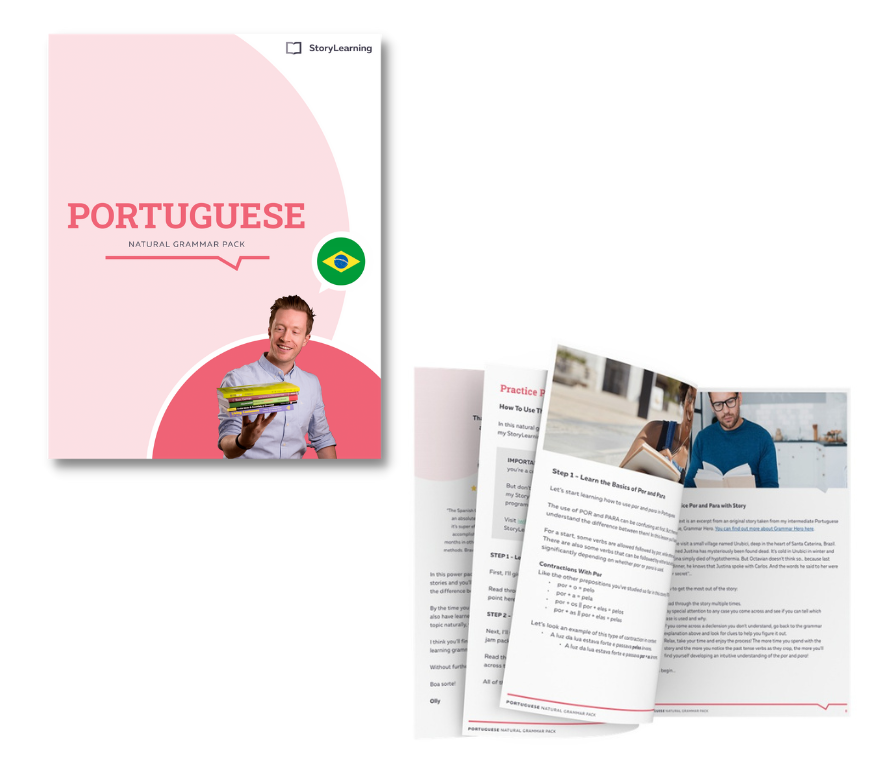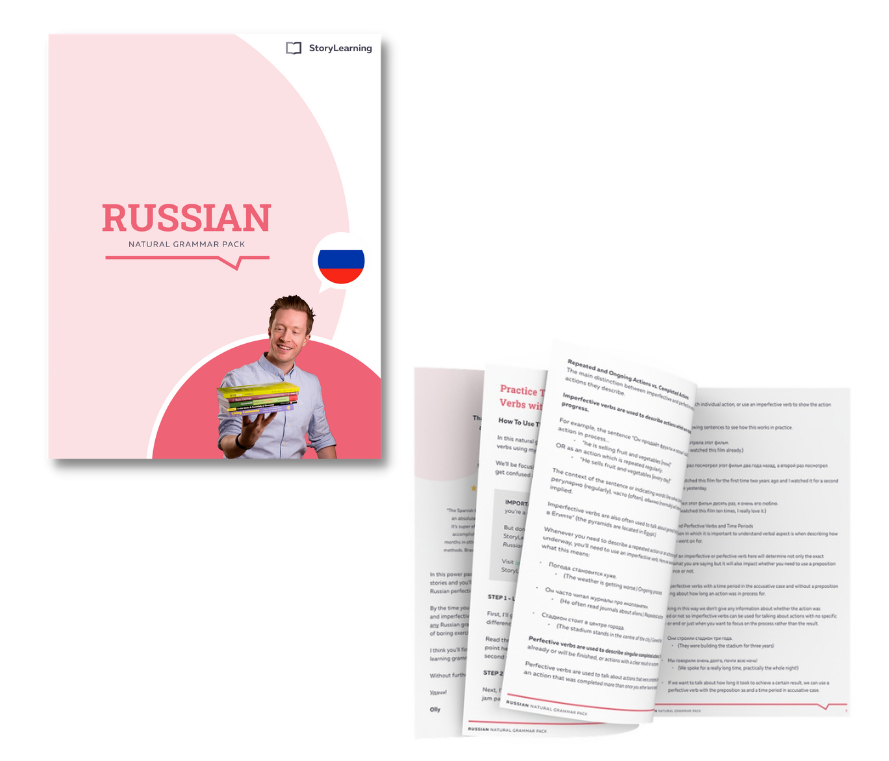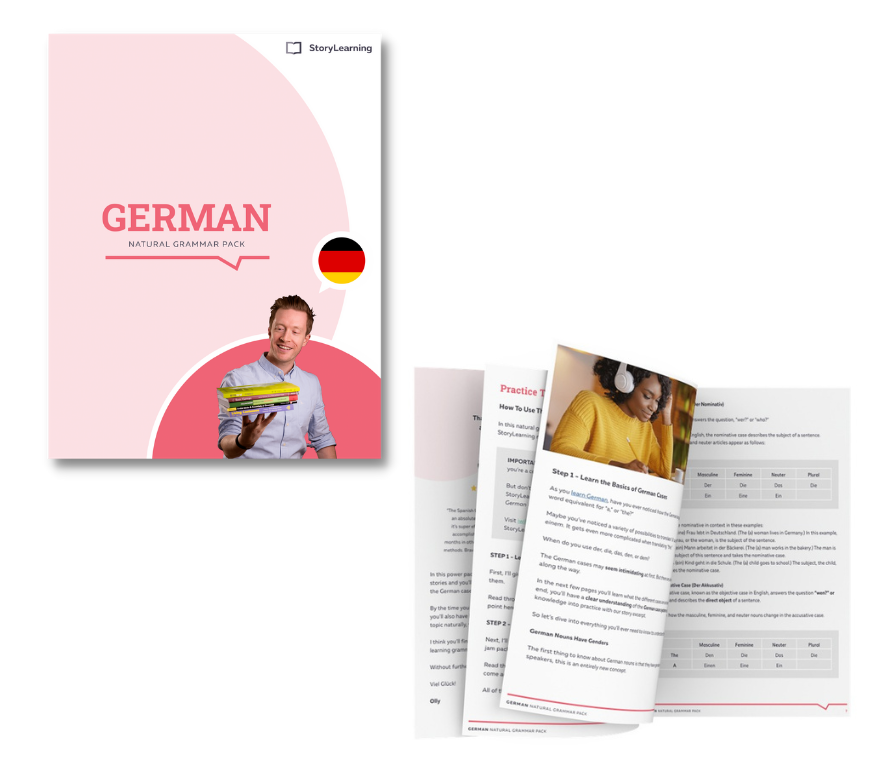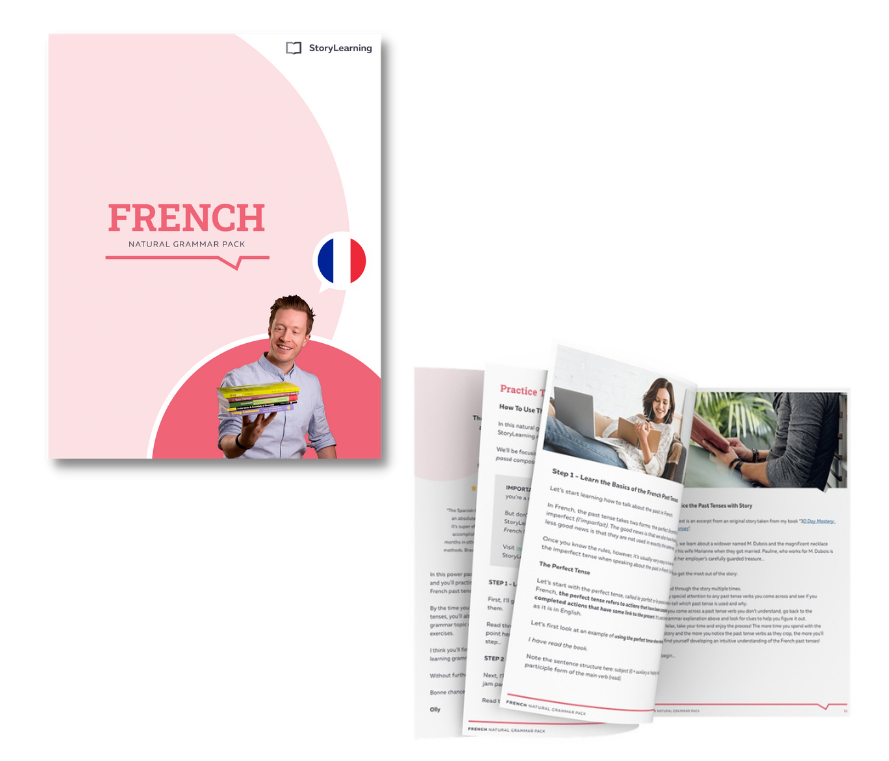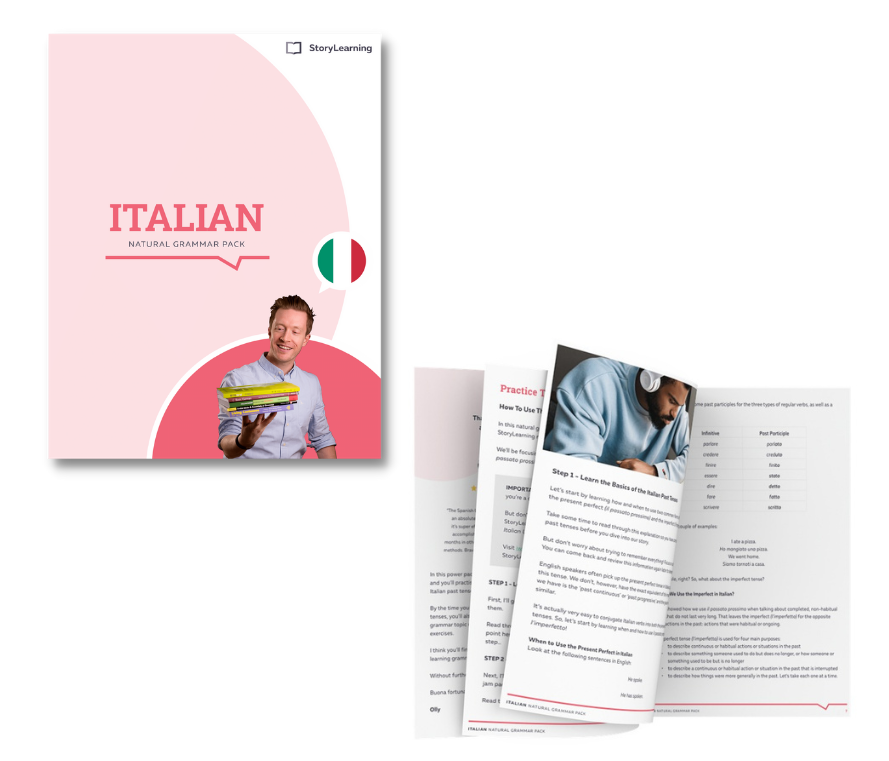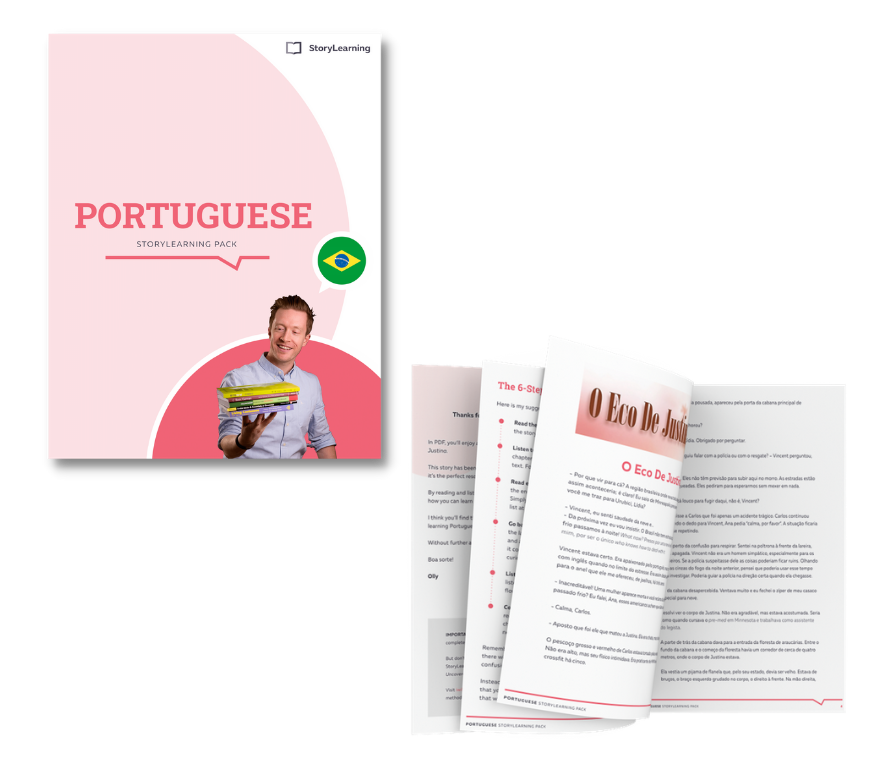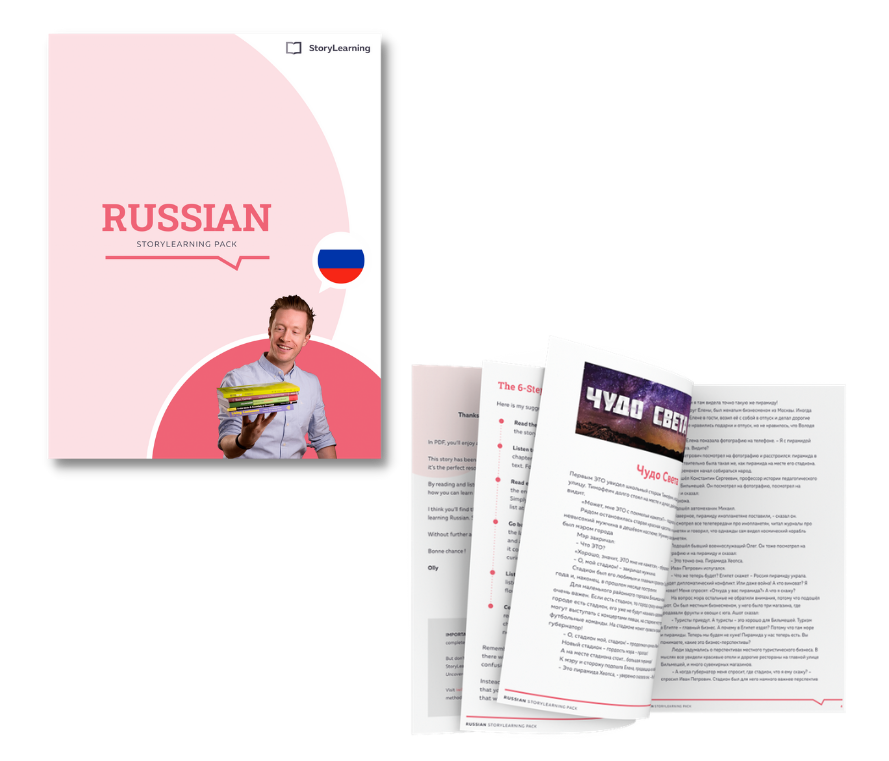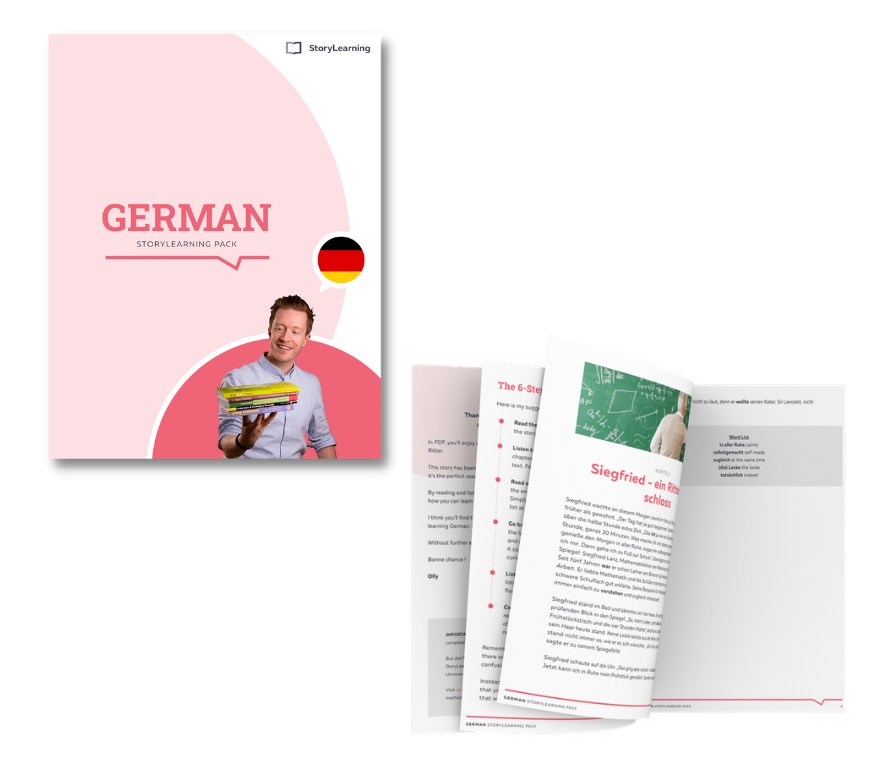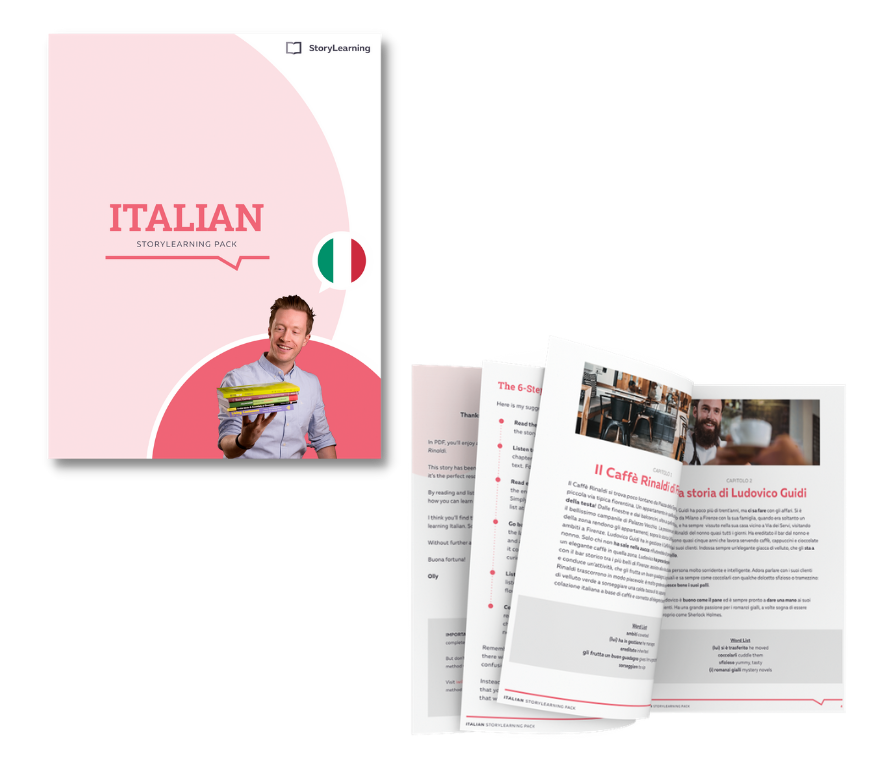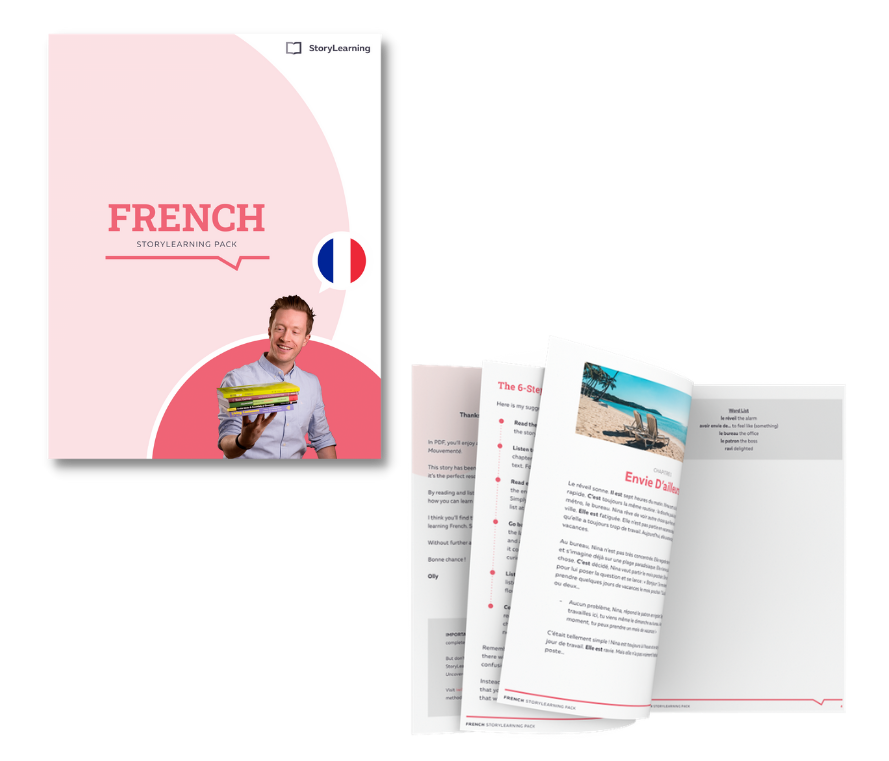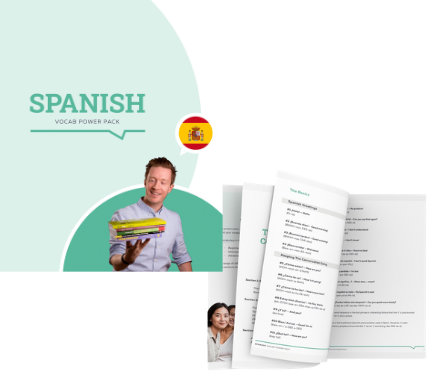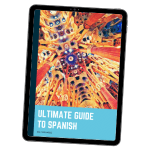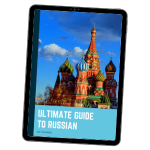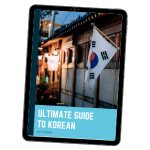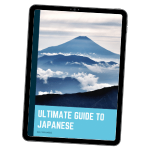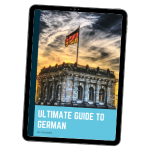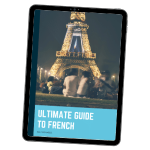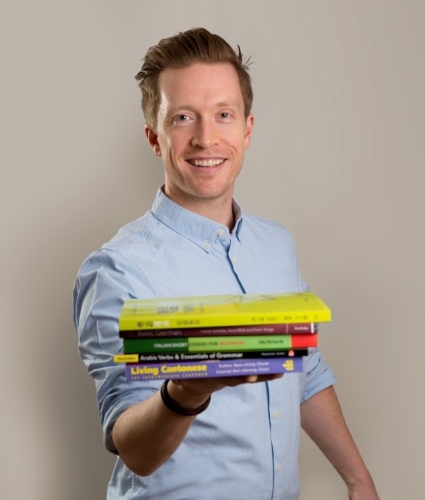Remember being 5 years old and having to learn all 26 letters of the alphabet?
Well, it could have been way worse.
When you’re learning a new language, you often have to pick up a whole new alphabet.
But those 26 letters? Try fifty thousand!
In this video, I’m going to show you ten different alphabets so complex, they make English look like a piece of cake.
Pro Tip
By the way, if you want to learn a new language fast (even ones with different alphabets), my top recommendation is StoryLearning®, a fun and effective method that gets you fluent thanks to stories, not rules.
Find out more and claim your free 7-day trial of the course of your choice.
If you prefer watching videos to reading blog posts, hit play on the video version of this blog post at the top of the page. Otherwise, keep scrolling to discover these 10 different alphabets and their tricky letters and sounds!
Table of Contents
#1 Georgian
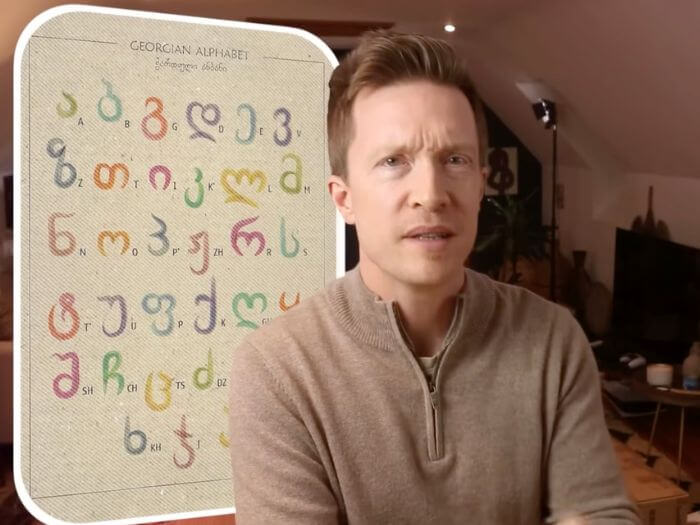
The first time I heard Georgian, I thought someone was playing a prank on me, and when I saw it written, I thought, Elvish?
Georgia’s a little country, wedged between Turkey and Russia, and the language sounds so unusual.
And if you’ve never seen how they write, prepare yourself – this is like no alphabet on Earth!
It’s one of the few scripts in the world that isn’t derived from any other, and no-one even knows where it came from. But the alphabetical order – ABCD – is similar to Greek, so there may be something there.
The more amazing part is that there are 3 versions of it! You would have loved your school teacher.
If you study Georgian, you’ll probably learn the modern version – which comes from an old word for a warrior on horseback. Nice!
There are 33 letters, no capitals, and a bucketful of weird sounds. And that’s minus the 5 letters they decide to cancel! But the real problem comes when you have to say whole sentences.
How will you know you’re seeing Georgian words?
The telltale letters are little M’s holding swords, and one that looks like a carrot!
And they don’t only write Georgian with this script, by the way. If you want to learn
- Abkhaz
- Batsbi
- Laz
- Svan
- or Mingrelian
then you'll have to learn it!
#2 Tibetan
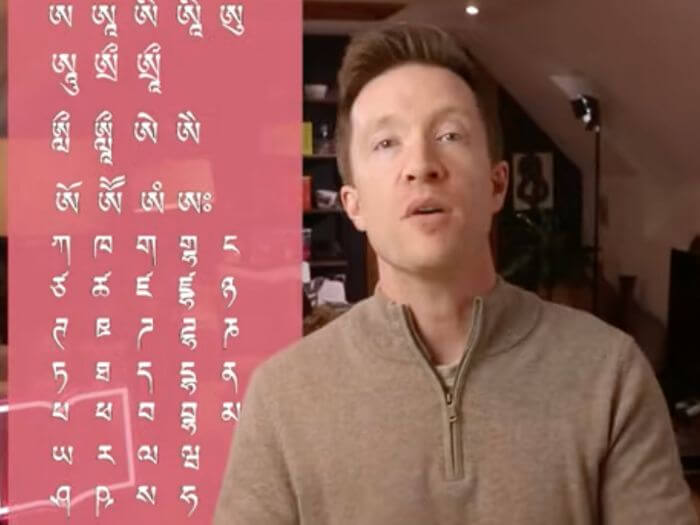
Tibetan spelling is a disaster of cosmic proportions.
Seriously, English spelling looks like a walk in the park!
The script is full of dramatic downward strokes, like a row of knives slicing through the page.
You might like this story – an ancient Tibetan king sent a young man to India to learn the alphabet, and he came back with a version from Kashmir. And then adapted it into something unbelievably complex for Tibetan.
Pretty impressive, except that over the centuries, the pronunciations changed drastically, but the spellings froze in time!
Tibetan uses a type of script called an abugida, where you stack letters to build words. You start with a root letter and pile other letters around it – above, below, on the sides.
A single Tibetan syllable can have up to seven letters crammed in!
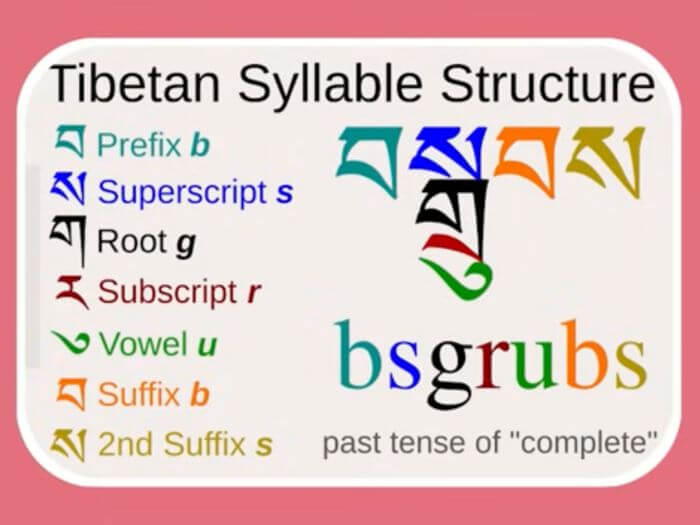
Each symbol starts with a built-in ‘A’ sound, and you tweak it with little curls and twists to change the vowels.
Also, you can flip the consonants around.
What’s really weird is the way you say the words is way shorter than how you write them. It’s silent letters everywhere!
The ones at the top are always silent, but you can’t just ignore them, because they change how everything else sounds.
Sometimes you can’t even tell which is the main letter! And to top it off, Tibetan is tonal, adding even more layers to the puzzle.
The last spelling reform was over 800 years ago, so it’s the opposite of a phonetic language!
And if you’re wondering why nothing changes, it’s because you can’t mess with a sacred language, and you definitely can’t touch the sound that existed before all other sounds!
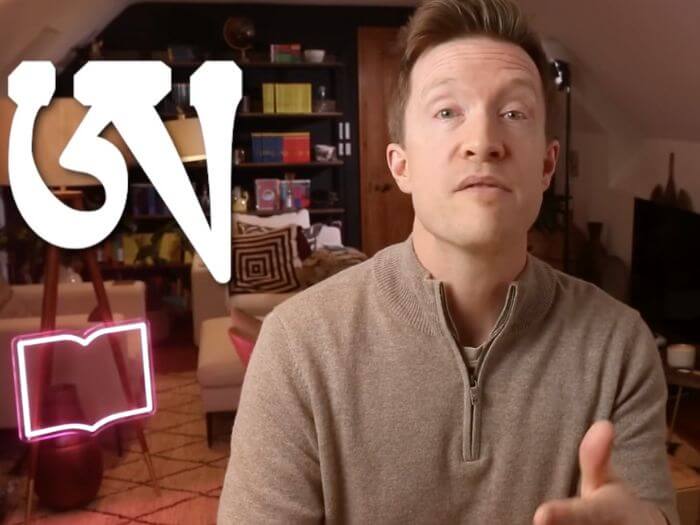
In Tibetan philosophy, this sound is even more primal than the ‘Ommm’ you might’ve heard people chanting.
They see it as the beginning of sound itself – as in, it existed before the universe!
Let that sink in.
How much do you know about the Rastafarian king Haile Selassi? Because I can tell you what alphabet he wrote with.
#3 Amharic (Ethiopia)
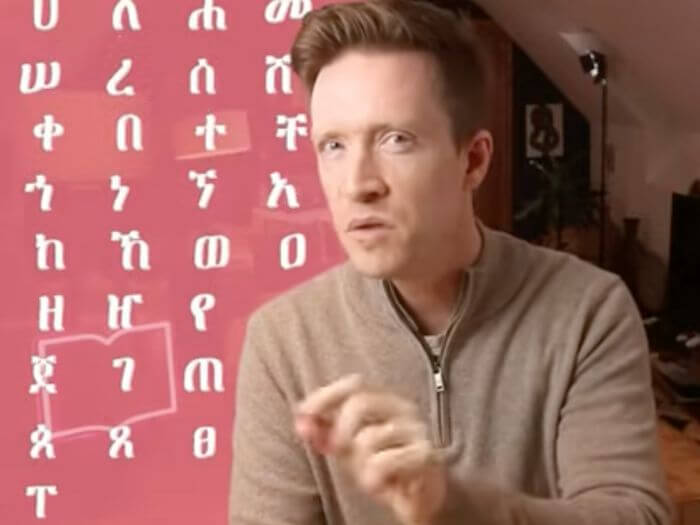
Can you imagine writing that goes back to BC days?
This is one of the oldest scripts still used today, an alphabet that always looks as if it’s been drawn freehand.
It was originally made for a dead language, but it’s still alive and kicking in Ethiopia, where they speak Amharic.
Ethiopia really stands out in Africa, because it’s the only country that has a native African script, although with Arabic roots.
There are 7 vowels and 31 consonants – not so bad, until you realise each consonant has seven variations!
And this is quite amusing:
If you type on an Ethiopian keyboard, the letters still look like they’ve been bumped into by a speeding rhino! And it’s no mistake – the wonky letters are intentional.
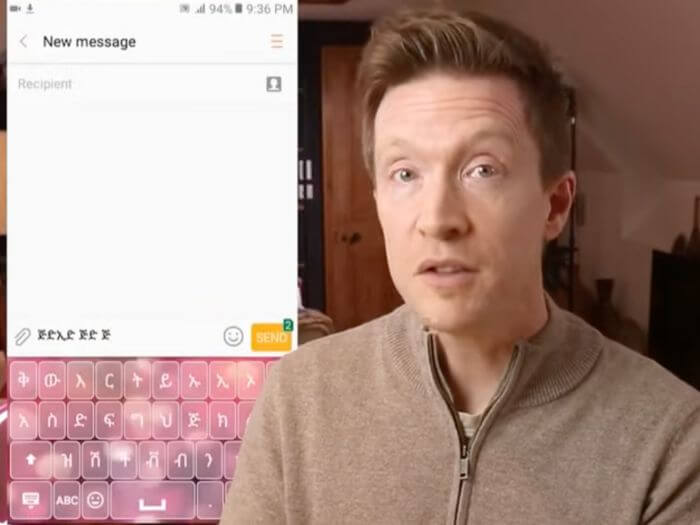
It’s all about keeping the ancient look alive, so you get this animated-looking alphabet (which weirdly makes reading easier).
There are more than 200 of these funny mutating letters.
And let’s not forget the fun stuff: the ‘H’ sound has 4 totally different symbols, another 4 make a glottal sound and there are these funky three-legged letters doing the twist – it's wild!
And Amharic punctuation? It’s just dots, dots everywhere. Insane, but if you think it’s as stunning as I do, I’ll be waiting for your tattoo ideas!
#4 Japanese
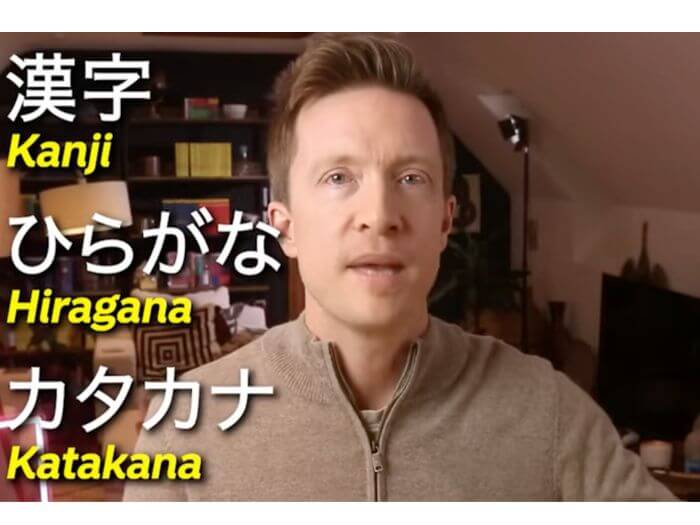
The most confusing part about Japanese writing is it uses not one, but three writing systems – Kanji, Hiragana, and Katakana. And yes, you need to learn all three. They’re iconic and they all work together as one.
Hiragana is the everyday one that gives Japanese its flowing look.
Katakana is Hiragana’s edgier cousin – it’s got sharper lines and handles foreign words and sound effects – kind of like how we use italics in English.
Hiragana and Katakana are normal alphabets that just make sounds.
But Kanji? Better take those kiddie gloves off.
Kanji’s the big boss of Japanese writing!
They’re complex symbols borrowed from Chinese and there are 1000s of these bad boys.
Just the kanji part of Japanese can take years to pick up and most have more than one way to pronounce them!
Oh – there’s also this thing called Okurigana which might look like letters (and in other situations in Japanese they are), but don’t be fooled – they just have grammar jobs.
They’re hiragana that follow kanji around like shadows to point out the verb tenses and adjectives. Japanese is crazy beautiful, but a firecracker!
#5 Arabic
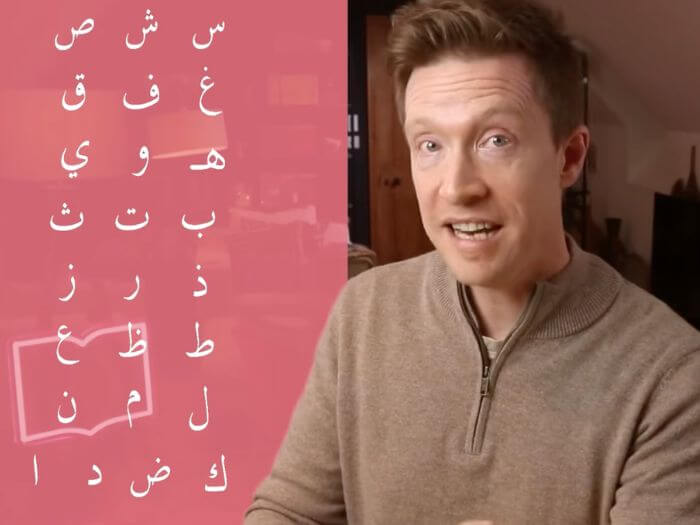
If you want to learn some truly beautiful writing, you might want to try Arabic.
When I lived in Cairo, I was surrounded by Arabic script, and out there you meet people who make art with it.
Arabic script is called an abjad, and this is where the trouble starts. Abjads don’t write any short vowels! They’re all invisible unless you’re lucky enough to be reading something with these tiny little marks called diacritics sprinkled in for learners.
Most of the time, you’ve got to guess the vowels from the context – good luck with that!
There are only 28 letters – that’s the easy part – but a lot of these have the same base shape, with different dots that can totally change the letter.
And the endless diacritic marks aren’t just for vowels – they can dramatically change the pronunciation and meaning.
There's a word in Arabic that could mean a friend, a seed, or love – it all depends on where those dots are.
Oh, and just to add to the fun, there’s also a glottal stop, the Hamza!
You write from right to left, and always a flowing cursive style. And the letters never sit still – they shape-shift depending on their position in a word – at the start, middle, or end.
So now it starts to get really challenging to read.
Arabic script is used for other totally different languages like Persian and Pashto, each adding their own twists to the letters.
It’s a constantly moving target!
#6 Cherokee
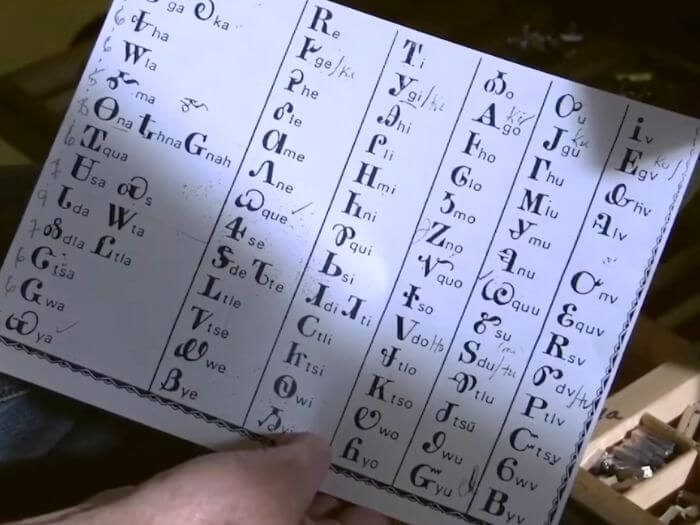
The Cherokee alphabet has a really interesting story.
It was invented in the 1800s by a guy who was amazed at the “talking leaves” of European writing, so he spent 12 years designing a Cherokee alphabet.
If you're wondering why some of them look like latin letters, that's because he used an English spelling book for inspiration, without knowing what the letters meant! Very innovative.
In the end he made 85 symbols.
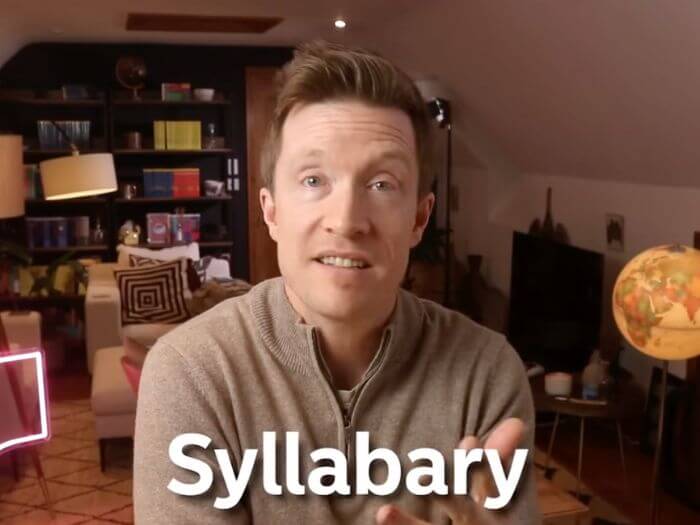
This kind of script is called a syllabary, because each “letter” is a whole syllable.
If you look at a chart, the top row is the 6 vowel sounds, and the rest are consonants mixed with those vowels, and Cherokee has one little extra S sound hiding there as you can see below.
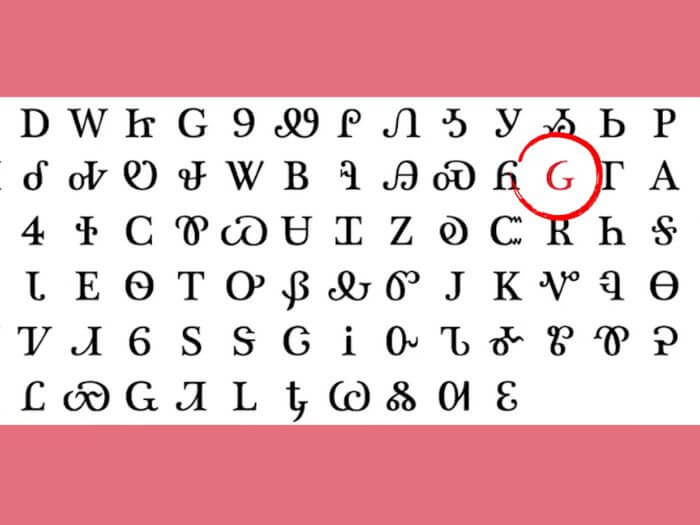
But here’s a plot twist. The letters you think you recognise will definitely fool you. The ‘D’ makes an ‘Ah’ sound, and the ‘A’ sounds like ‘Go’! So have fun with all the mismatches.
A fascinating aspect of Cherokee is that it has very long words!
By the way, writing by hand will help you learn the script much faster, because if you can connect each letter’s shape with a physical action it’ll stick better in your memory.
Remember that for the rest of these impossible alphabets!
#7 Mongolian
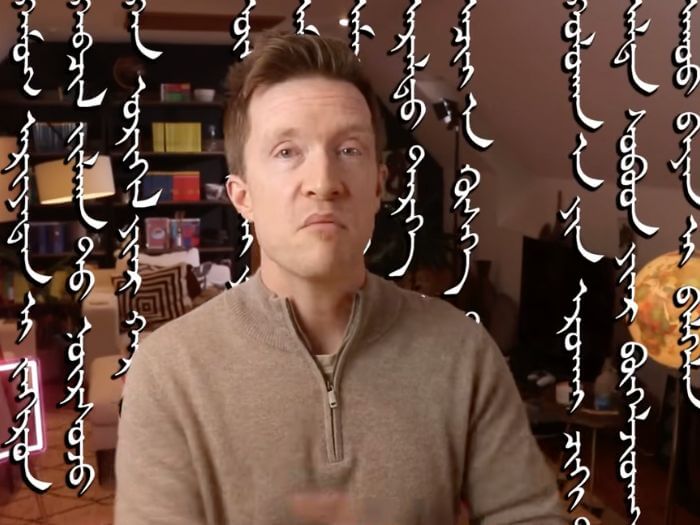
Mongolian script is a rare beast.
It’s one of the few writing systems in the world that runs vertically, but also left to right.
A word is basically a straight line with lots of things sticking out the side – reminds me of those horses with dreadlocks, ever seen them? Wild manes blowing in the steppe winds!
As you can probably guess, this strange top-to-bottom alphabet is extremely rare in writing. No, don't flip your screen to read it!
You build words vertically by stacking letters, and like Arabic, it’s always in cursive so the letter shapes change, but it looks badass once you get the hang of it.
And believe me, this won’t come easy!
Mongolian has sounds that just don’t exist in English.
But it also has some rare things among languages – zero sounds for K and L! I’m dead serious, and get this – somehow, there are 13 vowel letters, but only 7 vowel sounds.
I should mention that these days they use the Cyrillic alphabet, but they’re fighting hard for the traditional one to win. So is Mongolian the hardest? I don't know, but it definitely gets unicorn status.
#8 Khmer (Cambodia)
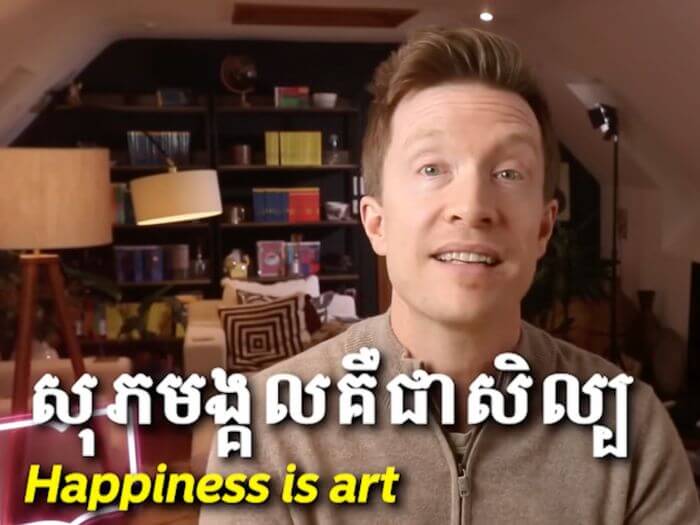
If you love intricate lace patterns, you’ll be obsessed with this one.
In Cambodia they have an alphabet that’s crazy long, and the letters are as densely packed as a jungle.
It’s called the Khmer script.
I have a little trick one of my students suggested for practising handwriting in strange alphabets: Look on Amazon for some of those preschool writing books for kids.
But don't expect this to be easy!
Khmer has 74 letters – you heard me, and 23 of them are vowels. I don’t know how good your maths is, but that equals a fairly big number of sounds you never make in English. How do you even fit 74 letters on a keyboard? Oh, 3 on each key? Gotcha.
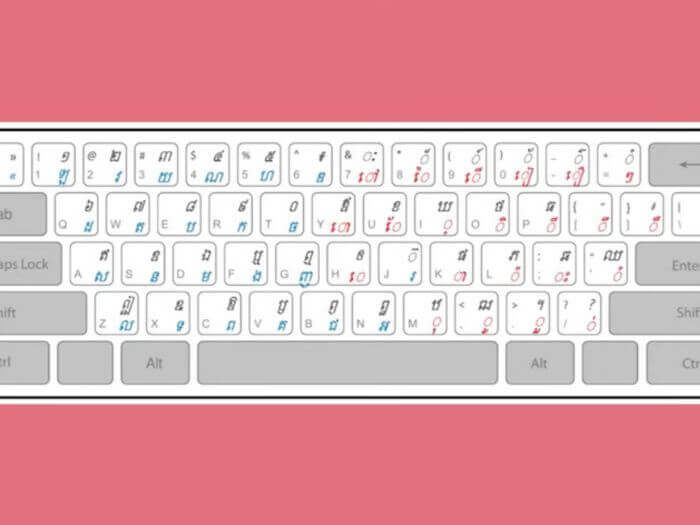
And then meet sub-consonants: tiny versions of letters squashed under bigger ones to form crazy consonant clusters.
Meanwhile, those vowels are up to their own shenanigans. The same vowel can have completely different sounds depending on what consonant it’s with, because the consonants have a high sound and a low sound. Oh, I give up!
But don’t worry – there’s one thing your brain will like: You write Khmer from left to right, just like English. Mind you, there aren’t any spaces between words.
#9 Chinese
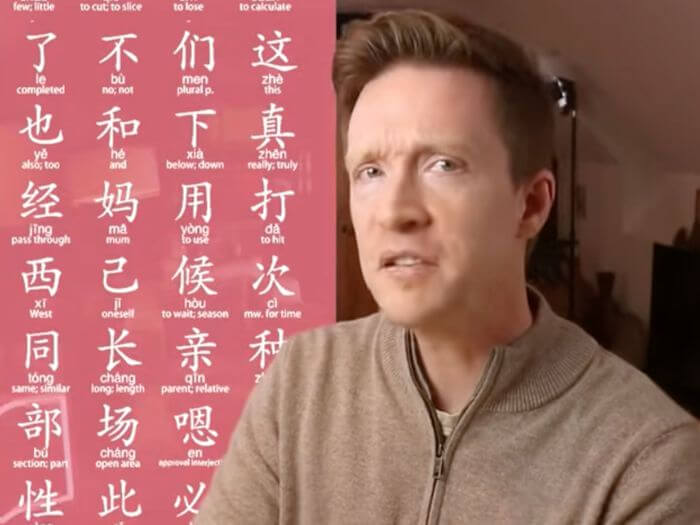
If you’re a terrible speller, keep reading.
Instead of an alphabet with spelling, Chinese uses characters called Hanzi. Think of them like emojis – you don’t “read” them letter by letter, you just understand the whole meaning.
Only problem is, hanzi are way more complex than emojis! In Mandarin, each symbol represents a concept, and they often have hints for pronunciation, and then you combine these to make words and sentences.
Some characters are simple, like sun or moon, and if you stick sun and moon together, you get brightness. Mind you, stick “half” and “moon” together and you get “fat” – don’t ask why!
But then you see insanely complicated characters like this one:
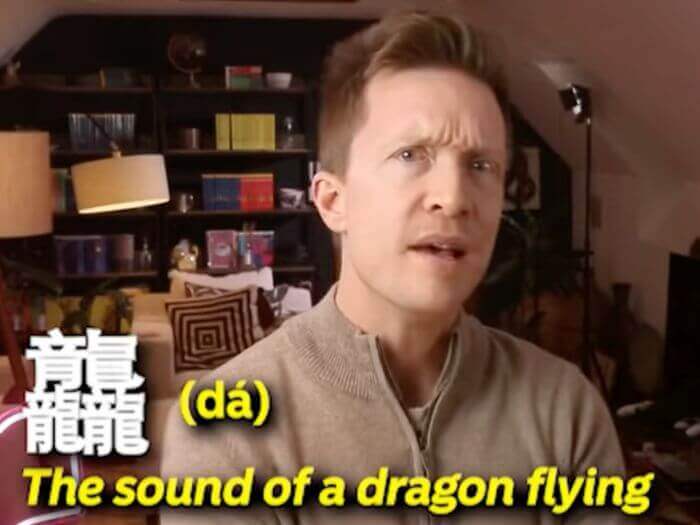
A whopping 48 strokes later, you get the sound of a flying dragon!
Mandarin characters are built from smaller parts called radicals, and most of them have clues you need to figure out.
What are all these other characters that don’t mean anything? Glad you asked – they’re for possession or past tense.

Meanwhile, lots of other characters are just used as sound fillers at the end of sentences to add a bit of feeling!
And you have to watch out – the stroke order is a big deal. If you write it wrong, it's like scribbling nonsense. Take the word meaning “I” or “me” which has 7 specific strokes.
If most difficult means the biggest number, we have a winner – Chinese has over 50,000 characters! Luckily, you only need about 3,000 for everyday stuff. No pressure.
Could any writing outdo Chinese?
Let me introduce you to the most notorious spelling in the world.
#10 Thai
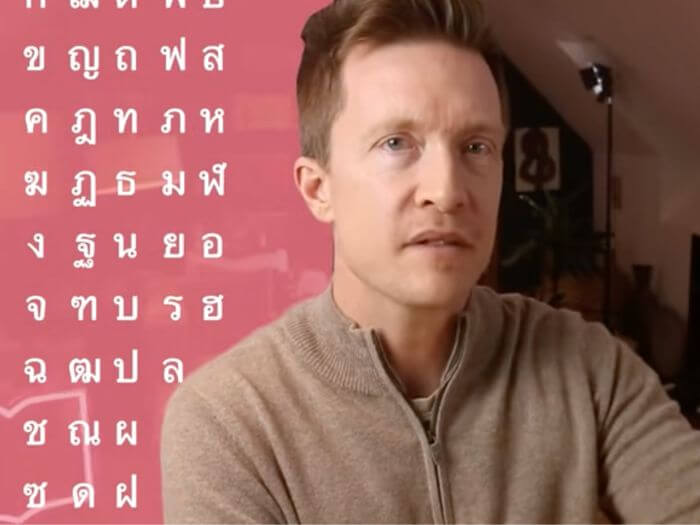
Thai writing looks amazing, but it’s very, very hard to spell with, and it has something to do with seriously outdated letters.
I’m talking about letters that should have been buried a long time ago, because they no longer match the way people speak!
You see, Thai writing is not only really old, but it inherited some fossilised letters from Sanskrit.
Yet to this day they use the archaic writing system, even though they’ve ditched some of those sounds!
You want Thai? This is precision writing, my friend!
What fun this is – an alphabet with 44 consonants for writing only 21 consonant sounds.
Also, it’s an abugida, so we still have the 16 vowels, which combine to make 28 to 32 vowel sounds. And you've to figure out where to put them, because Thai words are written in a unique way.
And you have to write “vowel” next to the vowel. It would be like writing “vowel E” and “vowel I” to spell “English”.
Phew! Interesting spelling.
But that’s still not all.
Thai also has tones, and unlike most other tonal languages, with Thai you do have to write the tones on the letters.
There are 4 of them, and if you don’t write the tone mark, you’re saying something totally different.
I mean, if you’re a dance choreographer, this might be just up your alley.
And then you can write absolutely beautiful things.
By the way, if you'd like to know where the alphabet came from, check out this post about the origins of the alphabet.
If you want more language trivia, take a look at these 33 mind-blowing language facts or read this one about the 10 fastest spoken languages.
Different Alphabets FAQ
How many types of alphabets are there?
There are several types of alphabets used around the world, including Latin, Cyrillic, Arabic, Devanagari, and Greek. Each has its own set of letters and writing rules based on language and region.
What do you call different alphabets?
Different alphabets are often called “writing systems” or “scripts.” Examples include the Latin alphabet (used in English), Cyrillic (used in Russian), and Hangul (used in Korean).
What are the 26 letters from a to z?
The 26 letters from A to Z make up the modern English alphabet: A, B, C, D, E, F, G, H, I, J, K, L, M, N, O, P, Q, R, S, T, U, V, W, X, Y, and Z. This alphabet is based on the Latin script and is widely used worldwide.

Olly Richards
Creator of the StoryLearning® Method
Olly Richards is a renowned polyglot and language learning expert with over 15 years of experience teaching millions through his innovative StoryLearning® method. He is the creator of StoryLearning, one of the world's largest language learning blogs with 500,000+ monthly readers.
Olly has authored 30+ language learning books and courses, including the bestselling "Short Stories" series published by Teach Yourself.
When not developing new teaching methods, Richards practices what he preaches—he speaks 8 languages fluently and continues learning new ones through his own methodology.

